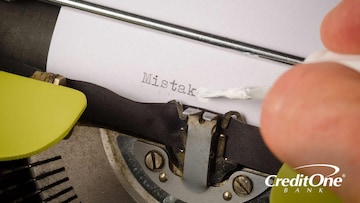
How To Remove Collections From Your Credit Report
October 17, 2023
It’s no fun being in collections, regardless of how we got there. So how do you remove that entry from your credit report?

Introduction
If you don’t pay your credit card bill or other financial obligations, the creditor or lender will charge you late fees. If you still don’t pay, they will attempt for several months to get payment from you. If you still don’t pay, they will likely charge off your account and send it to collections after six months, or 180 days.
All of that (the late payments, the charge-off, and the debt collections) usually becomes part of your credit report. Each of those events can negatively impact your credit score on their own, but stacked on top of each other they create an even bigger ding.
Eventually, the negative impact of these goes away — usually seven years after the collections agency takes over. But in the meantime, there are some things you can do to minimize the damage.
How To Review Your Credit Report for Collections
The first step to avoiding negative items on your credit report is to actively monitor your credit report on a regular basis. You can get your report from each of the three credit bureaus — Experian, Equifax and TransUnion — once a year.
Pro tip: spread out your requests so you’re getting one credit report every four months or so, from a different bureau each time.
It’s not unusual to find mistakes on your credit report, so that’s the first thing you should look for. Secondly, check for things that are accurate but undesirable, like collections activity.
Collections will appear in a dedicated section, usually near the top of the report. Each entry will include the original creditor, the collection agency’s name, the current and original balances, your payment status, and relevant dates.
If you find incorrect information anywhere on your credit report, you can dispute the errors and have them removed. This includes mistakes in your personal info, fraudulent accounts, and inaccurate reporting.
How To Remove Inaccurate Collection Information
If the collection information is incorrect — either it wasn’t your account, or the amounts or dates are off — you can request it be removed from your report. If the same mistake appears on all three reports, you’ll have to do this with each credit bureau. But the process is free.
- Gather any documentation that proves the error, like the original statements.
- File a dispute online at the credit bureau’s website, or by phone or mail.
- Wait 30 days for the bureau to respond.
Since collections activity should fall off your report after seven years, you can also request the removal of outdated line items. But keep in mind that it’s seven years from the date the collections agency gets your account, plus the six months before charge-off. So that’s usually seven-and-a-half years total from the delinquency, or when you first neglected to pay.
How To Remove Paid Collections From Credit Reports
Once you have paid off your debt, it’s natural to want it removed from your record. Normally it will show as “paid” after a month or two, but that could still prevent you from being approved for something else, like a loan or mortgage.
You can write a letter asking the creditor or collections agency for a goodwill deletion. But they don’t have to grant the request, and deleting the collections activity won’t remove the late payments that led to it. Still, it’s worth a shot because there’s nothing to lose.
- Include your account number and all the pertinent dates, amounts, and other details of the debt.
- Apologize and acknowledge your financial obligations.
- Describe what circumstances led to missing your payments.
- Explain why you want the debt removed.
- List other on-time payments you have made recently.
- Ask for a second chance through a goodwill adjustment.
- Thank them politely for their consideration.
It’s important to be extremely respectful and professional throughout the whole communication. Remember, you are asking for a favor that will positively influence your financial future.
Follow-up After Removing Collections From Credit Reports
It would be nice to just trust that everything goes according to plan, but it’s best to double-check and follow up if needed. Credit bureaus and creditors both need to respond within 30 days of making a claim. So pull your reports after 30 days and check to make sure the changes or deletions were made.
It might not be free to get your report again, but all three credit bureaus started offering free weekly reports during the COVID-19 pandemic. They then extended the policy by several years, and as of this writing had no plans to discontinue it. You can check the latest status at AnnualCreditReport.com.
FAQ
If you’ve gone into collections, you might be worried about how it’s going to affect you. Here are the answers to some common questions.
How do collection accounts impact your credit score?
Being put in collections can lower your credit score by quite a bit, depending on the score you started with and the amount of the debt. According to FICO®, you can lose up to 83 points each time you miss a payment by 30 days, and 180 points on a 90-day delinquency.
You’ll have multiple derogatory line items by the time your account hits collections, including numerous late payments, a charge-off, and an active collections account. So on average, expect a ding of at least 100 points on your credit score. And paying it off doesn’t put those points back.
How long does collection stay on your credit report?
Collections activity will typically remain on your credit report for seven years, plus the initial 180 days (six months) between account delinquency and account charge-off. So the total time you need to wait is typically seven-and-a-half years.
Bottom Line
Taking your financial future into your own hands requires paying attention, and acting when you can make a difference. None of us can change the past, but we can change the impact it has on us. If you’ve gone through collections and need to start building your credit again, see if you pre-qualify for the Credit One Bank Platinum Visa for Rebuilding Credit — without impacting your credit score.


![How to Dispute Errors in Your Credit Report [Infographic]](/content/dam/cob-corp-acquisition/images/articles/2021/02/104343 COC_61_DisputeErrors.jpg?imwidth=360)
